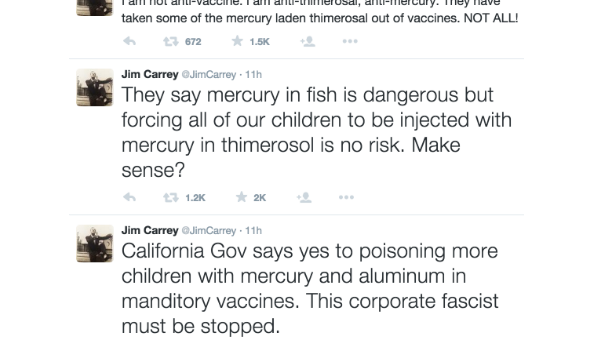11 Vaccine Myths That Just Refuse To Die: Debunked
6. Ingredients Part II: A Tale Of Two Mercuries

Another ingredient blamed for heavy metal poisoning is mercury. Anti-vaxxers would have you believe that the mercury found in some vaccines is purely elemental mercury (chemical symbol: Hg) found on the periodic table, this not true. Thiomersal, an organomercury compound and well known antiseptic and antifungal agent, has been used in several vaccines as a preservative to prevent decomposition by microbial growth. This allows medical staff to keep the vaccines in storage longer, leading to less of a demand to replenish stock.
When Thiomersal is introduced into the body, it metabolises into ethylmercury; ethylmercury does not bioaccumulate in the body and has a half-life in an adult of around ten days. The anti-vaccine community continually confuses ethylmercury with methylmercury which is a completely different compound. Methylmercury is found in larger species of tuna and other animals and takes longer to leave the body. Methylmercury will bioaccumulate in the body, which is why the Food and Drugs Administration has released a fact sheet regarding the safe eating of aquatic life containing methylmercury.
Due to consumer confusion and fear, Thiomersal has been removed from most vaccines in most countries, however, some vaccines still contain the compound, which has resulted in an overall lowered intake of ethylmercury for those getting vaccines. The level of ethylmercury allowed in vaccines has been deliberately calculated lower than the level at which the first sign of harm will occur, to ensure no one is placed at risk of harm.
Ingredients Part the Third: Foetal Cells.A point the anti-vaccine community will state over and over again refers to human foetal cells in vaccines. The will claim that vaccines used aborted foetuses in vaccine production, presumably as a way to scare people out of vaccinating.
Their claim is disingenuous at best. Vaccine technology at the time of vaccine delivery does not contain human cells or foetal tissue. Human cell lines are used in the earliest stages of the vaccine production process to grow the viruses they protect against. The viruses for the vaccine are grown using a human cell line and then killed or damaged to the point they won’t cause disease. The cells are removed as part of the manufacturing process and no cells remain at the point of delivery. The human cell line, however, did come from two therapeutically aborted foetuses, specifically, the WI-38 cell line a human diploid fibroblast cell line derived from a three-month-old foetus in the US. Another cell line, MRC-5, was derived from lung fibroblasts of a 14-week old foetus in 1966 in the United Kingdom. The abortions were not performed for the purpose of vaccine production and the collection of both cell lines were gained with full consent.